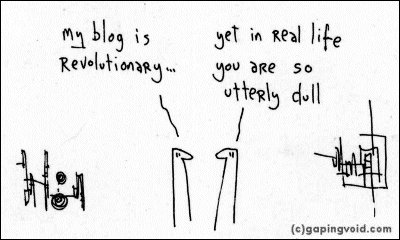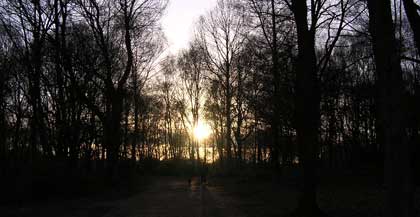Right, this is me brainstorming in my lunchhour so it’s necessarily brief. But:
There’s a good article on abstractdynamics.org which basically explains one of my fundamental problems with Friendster-like systems. Namely, that they require you to be far too definite about your relationship to people. At basic, it’s binary: they’re a friend or they’re not a friend. Beyond that, you can say how much they are a friend but rarely how little they are a friend. And, as the article points out, this is all counter-intuitive, when real-life friend networks are far fuzzier.
So I was trying to think how to organise something a bit better, and this is basically what I came up with:
- Start by dividing friends into “piles”. A pile could be, say, “all my friends from Barbelith, or “all my friends from home”; it needs to be a group that is on roughly equal standing. Essentially, the user should be willing to compare the friends within a single pile with one another.
- The user now compares the friends in a pile with one another – starting at the top, you just decide whether a person is more/less/the same “amount” (ugh) a friend as one other. As this process is repeated, the pile settles out. Repeat this for every pile.
- Now, the strength of ties of the piles to the user need to be explained. For instance, you might rank family or really close friends a bit above, say, friends from an email group. Not in particular – in general. A statement like “my family is probably more important to me than my friends from Barbelith”, say, might be the kind of thing we’re looking for.
- Finally, there ought to be a way of having “satellites” – ie, people you know but would never go as far as to call a friend. They’re not connected to your network; they orbit it. As you become closer, their orbit could tighten until they were probably roughly in line with a pile. And then perhaps they could be merged into a pile.
Now, that’s only a beginning. I’m not sure how to cope with people in multiple piles – to be honest, I could avoid it quite easily as, say, friends I met on the Internet who’ve become really good friends would probably slip into a “RL friends” pile rather than a “digital friends” pile, but I can see this is a problem.
Also: part of my idea for this implementation demands that no-one bar the user ever see the rankings. What should be public is a relative chart of links – ie, you can see who/what is more important to a person, but not by how much. And so we’ve got a relative graphics that judges friends fairly – by comparing like groups with like groups – rather than by comparing all with all. And, crucially, the comparison is of most import to the user making it, not to other people – which is why they can only see a relative map of things. Also, I really like the whole satellite friends thing, because I usually acquire a lot of them.
Anyhow, there you go. I’m sure it’s riddled with flaws but as I said, it’s a half-hour lunchtime brainstorm. Anyone want to take me up on this? Anyone want to comment? Anyone read this damn thing?

